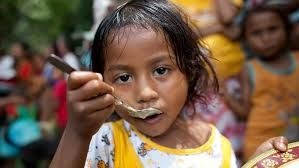World is Hungry!
The biggest challenge for the sustainable development goals (SDGs) is to eradicate poverty and hunger while maintaining sustainable food security for all in a crowded and dramatically unequal world. Although the world has succeeded in overcoming poverty in accordance with the millennium development goal (MDG) targets, food security and adequate nutrition have not been achieved.
The MDGs failed to treat food as a human right. Experience shows us that neither markets nor governments protect access to sufficient and nutritious food for everyone. Only accountability by those who produce food and regulate society can hope to achieve this protection, and this means that access to food needs to be treated as a human right, and not just as a policy goal or an outcome of a productive economy. Several constitutions and courts in Latin America have recently moved in this direction by making the right to food a legally enforceable right, but the international system, including the UN, still lags behind.
According to the Food and Agriculture Organisation (FAO), almost 1 billion people suffer from chronic hunger and almost 2 billion are under- or overnourished.
Children are the most visible victims of nutritional deficiencies. Approximately 5 million children die each year because of poor nutrition. Access to adequate food during the first 1,000 days of life is vitally important for healthy future generations. Even a temporary lack of food during that crucial time has a negative effect on physical and intellectual development. I was shocked when told that in Haiti, even before the devastating earthquake that ruined the country, that small mud balls were being sold in the market to ease children’s hunger pangs.
Of the world’s hungry people, 98% live in developing countries. The root causes of food insecurity and malnutrition are poverty and inequity rather than shortages. FAO statistics confirm that the world produces enough food to feed the 7 billion people living today, and even the estimated 9-10 billion population in 2050. Global agriculture produces 17% more calories per person today than 30 years ago, despite a 70% increase in population.




